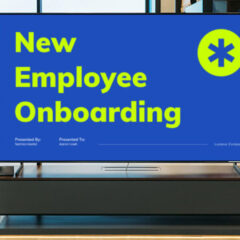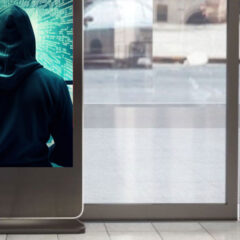How System on Chip Digital Signage Can Save You Time and Money

A key consideration in the development of a digital signage solution is how to deliver content to the displays. In a traditional networked architecture, content and scheduling information are sent to media players attached to the screens.
Media players range from multi-output and performance players, which provide server-grade processing power, to ARM-based players and devices based upon the Raspberry Pi and Intel Compute Stick. At the midrange is the so-called “standard player,” which is comparable to a desktop PC.
Today, however, you don’t necessarily need a separate media player to power your digital signage content. System on Chip (SoC) technology has advanced rapidly in recent years, providing the performance and feature sets to support digital signage applications.
SoC solutions are specialized chipsets that are built right into the display. They contain all of the elements of a computer system, including processor, memory, storage, operating system and software, embedded into the integrated circuit.
SoC digital signage offers a number of benefits over media player setups:
- Lower cost. Although smart displays cost a bit more, you’re still likely to save money compared to buying a separate media player.
- Simpler installation. Smart displays need only a power source and a network connection. Most media players are separate from the display, so you’ll need some sort of mounting solution and additional cables.
- Reduced power consumption. SoCs use very little energy, so you can reduce power consumption significantly by eliminating the media player.
- Easier maintenance. With SoC digital signage, there are fewer components to maintain and manage over the lifecycle of the solution. That will reduce field service costs.
Early smart displays were limited in terms of performance and features. Like other types of systems, however, SoC platforms have become cheaper and more powerful in recent years. The latest smart displays deliver the capabilities needed for the vast majority of single-screen use cases — even live streaming, multi-zone output and reporting. Multi-screen configurations can be considered for SoC with the right management infrastructure. SoC solutions also provide for remote monitoring and management of the device and its network connection.
But that doesn’t mean SoC digital signage is right for every application. Media players have more powerful processors and graphics cards and a richer feature set, enabling them to support 4K content, multiple video playback and more. As with any technology investment it’s important to consider specific requirements and choose the right solution based upon price and performance.
You should also consider future applications of your digital signage solution. Increasingly, organizations are integrating their digital signs with Internet of Things sensors to display information based on real time conditions. In retail and hospitality environments, displays can be connected with mobile apps to display customized content based on the proximity of the customer. Digital signs can also be used to create touchscreen kiosks and payment systems. These applications would likely need the power and flexibility of a standalone media player.
With so many possibilities, organizations are wise to consult with a solution provider with specific expertise in digital signage. SageNet has more than 30 years of experience delivering digital signage solutions, and has developed an ecosystem of services covering the full lifecycle of an implementation.
Smart displays can be a powerful addition to your digital signage platform, but traditional media players still have a role to play. Let SageNet help you choose the right solutions to meet your business and technology objectives.
More Insights
-
Digital Experiences, SageVIEW Approach
How Digital Signage Boosts Workforce Productivity
-
Digital Experiences
How Digital Signage Can Play a Role in Reducing Workplace Stress
-
Digital Experiences
7 Steps for Upgrading and Enhancing a Digital Signage Network
-
Digital Experiences
Why You Should Make Digital Signage Security a High Priority




